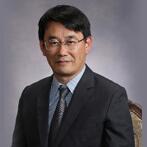Invited Speakers---Dr. Akon Higuchi

Chair Professor, National Central University, Taiwan, China
Akon Higuchi is a Chair Professor in National Central University. He is a guest researcher in National Research Institute for Child Health and Development (Tokyo, Japan) and in Riken (Saitama, Japan) and a visiting Professor in King Saud University. He received his Ph.D. in Tokyo Institute of Technology in 1985. He was a Professor in Seikei University (Tokyo, Japan) from 1993 to 2007. He received Sofue Memorial Award from Society of Fiber Science, Japan in 1994, Seikei Academic Award from Seikei Alumni Association in 2003, Fellow of Royal Society of Chemistry (RSC, UK), and Fellow of Taiwan, China Institute of Chemical Engineers (Taiwan, China). Higuchi is recognized by selection as an Editorial Board of Laboratory Investigation (Nature Springer, Impact Factor=4.254), Advisory Board of Journal of Materials Chemistry B (Royal Society of Chemistry, England, Impact Factor=4.776), Editorial Board of Tissue Engineering and Regenerative Medicine (Springer Nature, Impact factor=1.216), Editor of Open Physics ((Walter de Gruyter, German), Impact factor=0.755), and Editor in Chief of American Journal of Tissue Engineering & Stem Cell (Columbia International Publishing, USA). Higuchi served as a session chair or a session organizer at a number of International Conference [e.g., Termis-World 2018, Termis-AM2017, Termis-EU2017, Termis-AP2016, Pacifichem 2015, IUMRS-ICA2014, ISOMRM2014, etc.]. Higuchi published 6 high impact factor articles; 3 articles in Chemical Reviews (Nature Springer, Impact Factor=52.613) and 3 articles in Progress in Polymer Science (Nature Springer, Impact Factor=24.558) as first author and corresponding author since 2011. Higuchi published 87 SCI articles among past 5 years (2014-2018) and totally 240 SCI articles. H index in Google Scholar is 48 and 3912 citation among past 5 years and totally 7299 citation. Higuchi is interesting in the development of biomaterials for stem cell research. Higuchi established purification method of hematopoietic stem cells and mesenchymal stem cells from umbilical cord blood and adipose tissue, respectively by filtration method through polymeric porous membranes. Higuchi is also developing biomaterials for stem cell culture and differentiation.
Speech Title: Design of Biomaterials for Culture & Differentiation of Human Pluripotent Stem Cells
Aims: The goal of this study is to develop biomaterials for cell culture and differentiation for human pluripotent stem cells (hPSCs), which allow more than 10 passages (10 cycles) of cell cultivation.
Methods: The thermoresponsive nanobrush surface was prepared by coating block copolymers containing polystyrene (hydrophobic anchoring domain on dishes) and three types of polymers: (a)polyacrylic acid for cell-binding oligopeptides (GCGGKGGPQVTRGDVFTMP), (b) thermoresponsive poly-N-isopropylacrylamide, and (c) hydrophilic poly(ethleneglycol) methacrylate.
Results: We developed a continuous harvest method of stem cells cultured on thermoresponsive nanobrush surfaces where stem cells are partially detached by decreasing the temperature of the culture medium to be lower than the critical solution temperature and continuously culturing the remaining cells for their expansion in a fresh culture medium at 37 ˚C. The detached stem cells can be harvested in an exchanged culture medium after their detachment from the thermoresponsive nanobrush surface. The optimal length and coating composition of these copolymers for adequate attachment and detachment of human adipose-derived stem cells (hADSCs) and hESCs (human embryonic stem cells) were determined.
Conclusions: 5 cycles and 10 cycles of continuous harvest of hADSCs and hPSCs, respectively, on the thermoresponsive nanobrush surface by partial detachment of the stem cells were demonstrated. We also succeeded cardiomyocyte differentiation of hESCs and hiPSCs (human induced pluripotent stem cells) on biomaterials immobilized with several extracellular matrices using our developed protocols.

